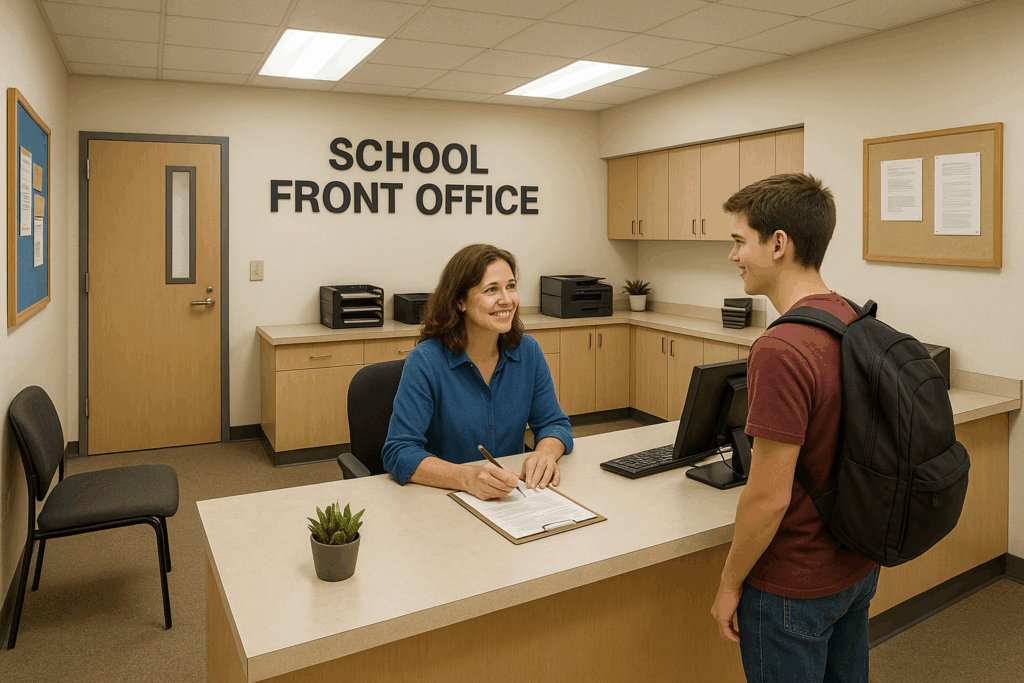The safety and security of our schools are of utmost importance to parents, students, and staff alike. Ensuring a secure and supportive environment is essential for student success and well-being. But how can you determine your school’s security and safety grade? In this article, we’ll break down what factors contribute to a school’s safety assessment and how you can evaluate and improve your school’s security and safety measures.
Understanding School Security and Safety Grades
Factors that influence school security and safety
A school’s security and safety grade is determined by various factors, including physical security measures, safety policies and procedures, emergency preparedness, mental health and bullying prevention efforts, and collaboration with local law enforcement.
Purpose of school security and safety grades
These grades are essential for providing a comprehensive understanding of a school’s safety environment, informing parents and staff about potential areas of concern, and guiding improvements in safety and security measures.
Components of a School Security and Safety Grade
Physical security measures
Physical security measures include access control systems, surveillance cameras, secure entry points, and well-lit campuses. A high-quality security system can deter potential intruders and provide a safe environment for students and staff.
School safety policies and procedures
Safety policies and procedures include guidelines for addressing safety concerns, reporting incidents, and maintaining a secure environment. A strong safety policy will outline clear expectations for staff and students, ensuring everyone understands their roles and responsibilities in maintaining a safe school.
Emergency preparedness
Emergency preparedness encompasses the plans and procedures in place to respond to emergencies such as fires, natural disasters, and active shooter situations. Comprehensive emergency plans, regular drills, and staff training are all vital components of emergency preparedness.
Mental health and bullying prevention
Addressing mental health and bullying prevention is a critical aspect of school safety. Implementing support programs, providing resources, and fostering a positive school culture can contribute to a safe and inclusive environment for all students.
Collaboration with local law enforcement
A strong relationship with local law enforcement can enhance a school’s security and safety measures. Regular communication, joint training exercises, and sharing of resources can lead to a more effective response in the event of an emergency.
How to Evaluate Your School’s Security and Safety Grade
Assessing the physical environment
To evaluate your school’s physical security, take a walk around the campus and pay attention to access control systems, surveillance cameras, secure entry points, and lighting. Note any areas of concern or potential vulnerabilities that may need to be addressed.
Reviewing safety policies and procedures
Review your school’s safety policies and procedures to ensure they are comprehensive, up-to-date, and effectively communicated to all stakeholders. Check for clear reporting procedures and guidelines on addressing safety concerns.
Evaluating emergency preparedness
Assess your school’s emergency preparedness by reviewing emergency plans, staff training, and drill frequency. Ensure that all staff members are familiar with their roles and responsibilities during an emergency and that students are regularly trained on what to do in various emergency situations.
Assessing mental health and bullying prevention measures
Evaluate your school’s mental health and bullying prevention efforts by examining support programs, resources, and the overall school culture. Speak with staff and students to gather their perspectives on the effectiveness of these measures.
Understanding the role of local law enforcement
Consider the relationship your school has with local law enforcement agencies. Assess the level of communication, joint training exercises, and resource sharing to determine the strength of this partnership.
Improving Your School’s Security and Safety Grade
Updating and upgrading physical security
Address any identified vulnerabilities in your school’s physical security by installing or upgrading access control systems, surveillance cameras, secure entry points, and lighting.
Strengthening safety policies and procedures
Update and strengthen your school’s safety policies and procedures to ensure they are comprehensive and effectively communicated. Provide training for staff and students on their roles and responsibilities in maintaining a safe environment.
Enhancing emergency preparedness
Improve your school’s emergency preparedness by regularly updating emergency plans, increasing staff training, and conducting more frequent drills. Ensure that all stakeholders are familiar with their roles and responsibilities during an emergency.
Addressing mental health and bullying prevention
Strengthen your school’s mental health and bullying prevention efforts by implementing new support programs, providing additional resources, and fostering a positive school culture.
Building relationships with local law enforcement
Enhance your school’s relationship with local law enforcement by increasing communication, participating in joint training exercises, and sharing resources to create a safer environment for students and staff.
Conclusion
Evaluating and improving your school’s security and safety grade is an ongoing process that requires the commitment of all stakeholders. By assessing the physical environment, safety policies and procedures, emergency preparedness, mental health and bullying prevention measures, and collaboration with local law enforcement, you can help ensure a secure and supportive learning environment for all students.
FAQs
What is the purpose of school security and safety grades?
School security and safety grades provide a comprehensive understanding of a school’s safety environment, inform parents and staff about potential areas of concern, and guide improvements in safety and security measures.
What factors contribute to a school’s security and safety grade?
Factors include physical security measures, safety policies and procedures, emergency preparedness, mental health and bullying prevention efforts, and collaboration with local law enforcement.
How can I evaluate my school’s security and safety grade?
Assess the physical environment, review safety policies and procedures, evaluate emergency preparedness, assess mental health and bullying prevention measures, and consider the relationship with local law enforcement.
How can I improve my school’s security and safety grade?
You can improve your school’s security and safety grade by addressing identified vulnerabilities in physical security, strengthening safety policies and procedures, enhancing emergency preparedness, addressing mental health and bullying prevention efforts, and building relationships with local law enforcement.
Why is collaboration with local law enforcement important?
Collaboration with local law enforcement is essential for enhancing a school’s security and safety measures. Regular communication, joint training exercises, and sharing of resources can lead to a more effective response in the event of an emergency.




